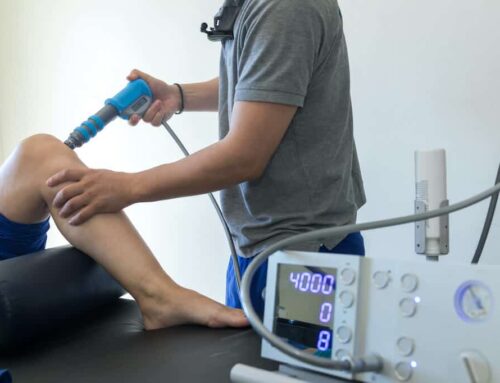
When it comes to maintaining an active lifestyle, pelvic floor problems can be among the most frustrating to live with. If you’re feeling unsure of yourself or misunderstood because of your pelvic floor problem, you’re not alone.
In fact, issues like incontinence, pelvic pain, and painful intercourse are common in men and women of all ages. More often than not, the biggest hurdle to fixing these issues is finding a provider who you can trust that understands the complexities of the pelvic floor.
In this article we’ll discuss the basics of pelvic floor dysfunction, important tips on how to find the best care for your needs, and how pelvic floor physical therapy can help you regain your confidence.
What is Pelvic Floor Dysfunction?
Your pelvic floor is a bowl-shaped group of muscles and connective tissue that sits in your pelvis (the area between your groin and your belly) and surrounds other important structures, like your organs. On a normal day, your pelvic floor should go completely unnoticed.
When your pelvic floor is healthy and functioning normally, it helps with important activities like going to the bathroom, creating pressure during exercise, and facilitating normal sensations during intercourse. In most cases, if there’s nothing bothering you in the general area of your pelvic floor, there’s nothing to worry about.
However, when your pelvic floor is not functioning normally, some common problems can arise:
- Incontinence, or difficulty with bowel or bladder control, can create urgency or irregularity that can impact your work duties, favorite activities, and social life.
- Sexual dysfunction includes a variety of problems such as pain during intercourse, erectile dysfunction, and painful ejaculation, and can negatively impact intimacy.
- Pelvic pain can include pain in a number of areas around your pelvis, which can make some positions more uncomfortable and impact your endurance for physical activity.
In most cases these issues develop gradually over time, progressing from minor inconveniences to significant issues that can interfere with your normal activities and quality of life. The good news is that with the right care plan, many of these problems can be treated successfully.
How Can Physical Therapy Help the Pelvic Floor?
Because the pelvic floor is responsible for coordinated muscle contraction and pressure generation to perform many different functions in your pelvis, dysfunction often leads to impaired muscle function and pressure imbalances. In many cases, too much or too little tension in the pelvic floor can lead to common symptoms like pain and incontinence.
Physical therapy is a well known treatment for muscle-related conditions, making it a very effective treatment for relieving your symptoms and correcting the root causes of pelvic floor dysfunction. Using exercises and other special treatments, your physical therapist can help you improve core muscle function, diaphragm function, and pelvic alignment to restore normal activity within your pelvic floor.
While most people are familiar with the idea of an internal pelvic floor exam, not all pelvic floor dysfunction requires a pelvic floor physical therapist or internal examination to get results. At DPT, we can help improve your pelvic floor without any internal examinations or procedures. In the event that an internal examination or intervention is required, we can refer you to the best pelvic floor specialist for your needs.
How is Pelvic Floor Physical Therapy Done?
Similar to other conditions that are treated with physical therapy, pelvic floor physical therapy starts with a thorough examination.
First, your therapist will get to know you through a detailed interview about your health history, lifestyle, and personal goals. Next, your therapist will perform a series of assessments to find the root cause of your pelvic floor dysfunction and areas for improvement. Finally, your therapist will work with you to build a comprehensive plan of care that meets your specific needs and goals.
During your treatment sessions you’ll learn a variety of techniques to improve the function of your pelvic floor, including special exercises designed to improve muscular sequencing, intra-abdominal pressure, and important movement patterns. Your therapist can also provide techniques such as manual therapy or biofeedback, as needed, to help enhance your recovery process.
Is Pelvic Floor Physical Therapy Right for Me?
Pelvic floor conditions can be difficult to talk about, and getting the right answers for your questions can be even more challenging. More often than not, embarrassment, social stigma, or frustration with previous failures in treatment can prevent us from getting the care that we need for more sensitive health concerns.
At DPT, our physical therapy treatments take your needs into consideration with private exam rooms, confidential care, and holistic treatments from movement experts who understand the sensitivity of your condition.
If you’re struggling with problems like incontinence, sexual dysfunction, or pelvic pain, pelvic floor physical therapy can provide you with the tools you need to get your symptoms under control and regain confidence to enjoy your favorite activities again.
How Can Working with an Expert at DPT Help Me Better Manage My Pelvic Floor Dysfunction?
As leading experts in physical therapy that addresses pelvic floor dysfunction for both men and women, The Doctors of Physical Therapy are ready to be your resource for recovery. With the help of evidence-based treatments that target root causes, comfortable and private treatment rooms, and a patient-first approach to care, you can get relief from your pelvic floor dysfunction and enjoy more of the things that matter to you.
Schedule an appointment today.






